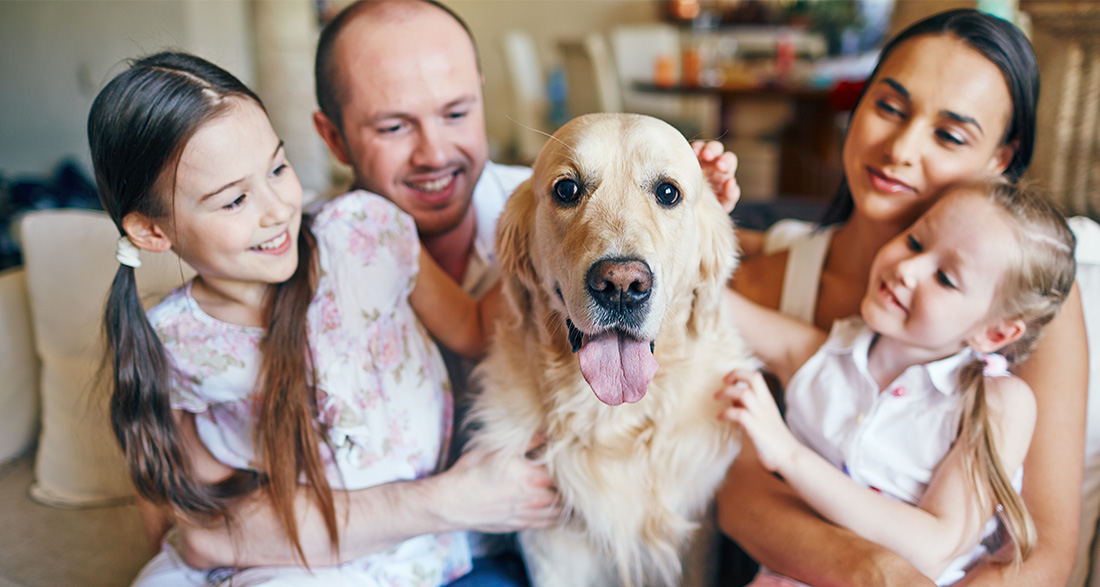If you have a family with (young) children and you’re looking for a dog breed that fits perfectly into your daily life, is up for any fun, and can handle the hustle and bustle, then you’ll definitely find your lifelong furry companion among our 8 dog breeds for families.
Anyone living in a (large) family knows how exciting and noisy everyday life can be. When considering adopting a dog, the question arises of which dog breed is actually suitable for a family. We’ll show you – the top 8 family dogs.
Are you a beginner when it comes to dog ownership and looking for a dog for your family? Then take a look at our overview of dog breeds for beginners.
What Makes a Family Dog?
Before we introduce you to the dog breeds, let’s first answer the question of what makes a suitable family dog. Unlike in single life or in old age, a family dog must possess all the characteristics that are important in a family: friendliness towards children and possibly other four-legged friends, strong nerves for emergencies, a strong need for togetherness, and the physical prerequisites for activities.
Dog breeds like the Shiba Inu, the Akita, or the Chow Chow value a quiet everyday life without much hustle and bustle. Also, such dog breeds reach their stress limit more quickly, and a corrective growl or snap can be interpreted as aggressive. However, it is often overlooked that every dog breed brings its genetically determined traits.
Therefore, it’s better to choose a dog that truly enjoys life in the family. Let’s introduce you to our family-friendly four-legged friends!
Small Family Dog Breeds
Papillon:
Anyone looking for a small, friendly, and lively family dog will find a lifelong four-legged friend in the Papillon. The name “Papillon” translates to “butterfly” and comes from the sweet, fluffy ears of this family-friendly dog breed. Despite its size, consistent training should not be neglected, to which the eager-to-learn four-legged friend willingly submits.
Whether it’s fun and games in the garden with the children, long walks through the forest, or just a quiet day on the sofa, the little Frenchman says “Oui!”
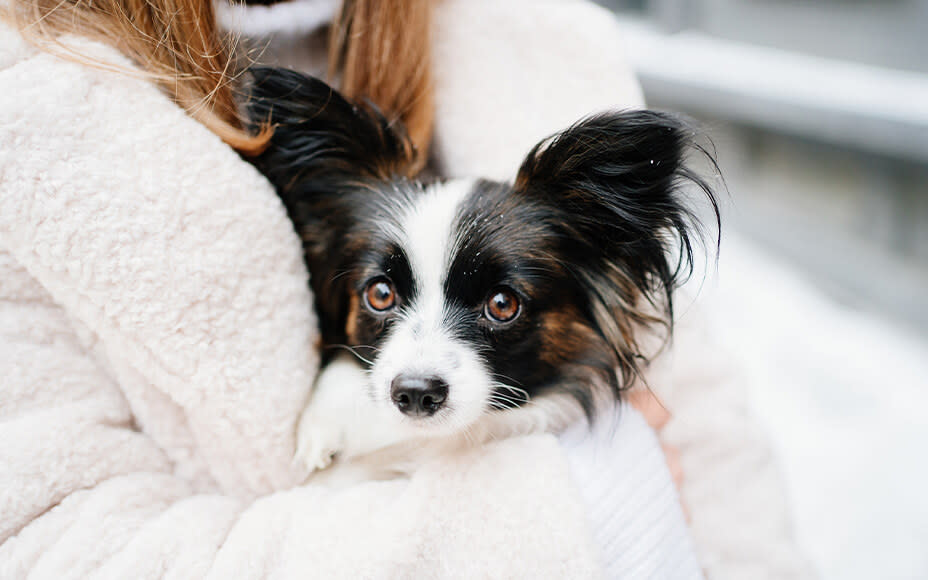
Bichon Frise:
The snow-white, curly coat is the trademark of the Bichon Frise, which also belongs to the French dog breeds. Originally bred as a companion dog, the snow-white beauty is increasingly found at the side of families today.
The small four-legged friend is motivated, patient, eager to learn, and extremely compatible with both two and four-legged friends, making it an excellent dog for family life. Especially due to its curious and very intelligent nature, comprehensive training should not be lost sight of despite its small size.

Pomeranian:
This fluffy little four-legged friend magically attracts children with its cute appearance alone. And he gladly accepts that, because the energetic Pomeranian turns out to be playful and cuddly. The Pomeranian can do both: temperament and relaxation when necessary. His versatile nature makes him a pleasant family dog even as a Pomeranian puppy.
Anyone who witnesses the Pomeranian in action will hardly overlook its loud presence – because this small dog breed is not only cheerful but also comes with a good dose of alertness and self-confidence. The Pomeranian has become one of the most popular dog breeds.
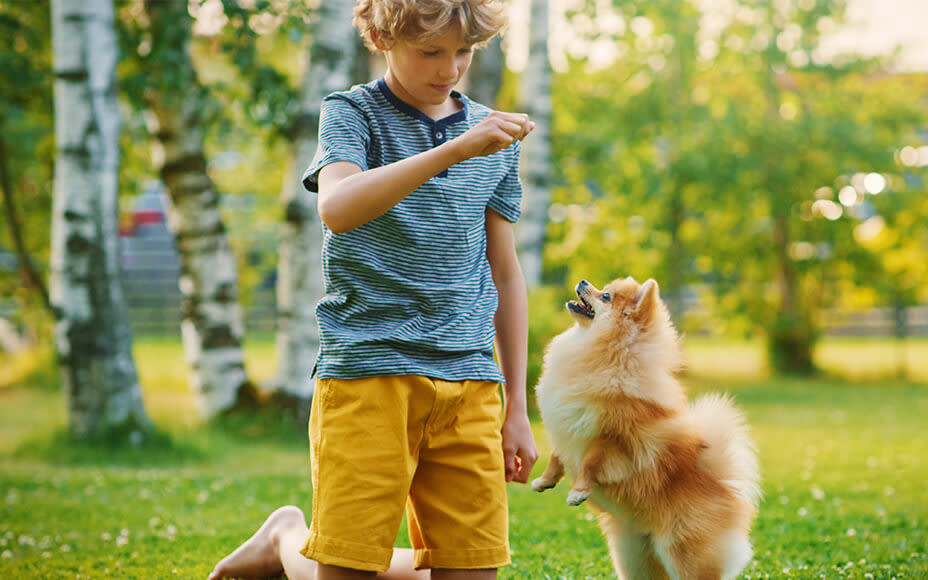
Maltese:
With its wavy mane, the Maltese naturally fits into the family picture as a small dog breed. Patient and playful with children? You bet! The Maltese is even well-suited for beginners as a family dog, being eager to learn and uncomplicated.
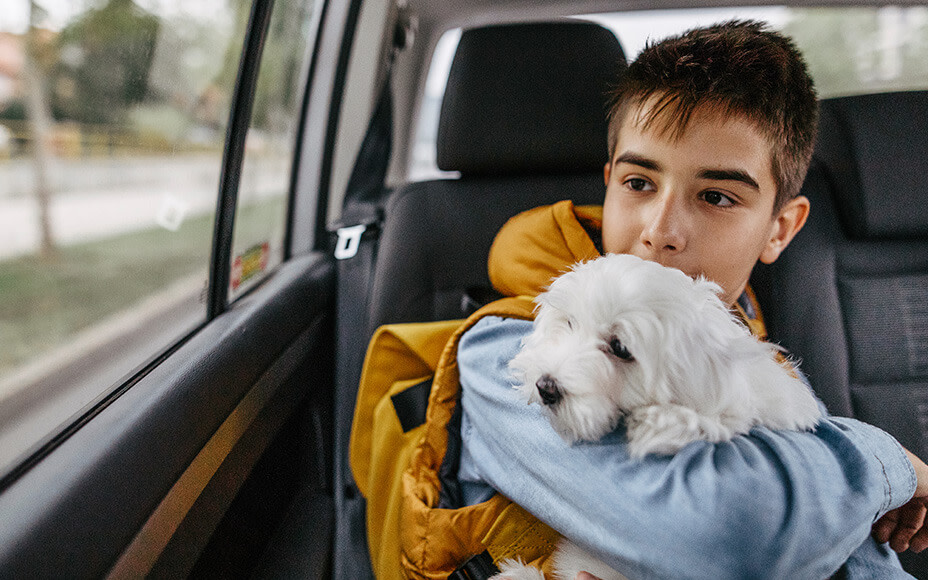
With its long fur, regular coat care is not entirely uncomplicated. Daily brushing and detangling, along with regular baths, ensure a radiant coat.
Large Family Dog Breeds
Golden Retriever:
Hardly any dog is as popular among family dog breeds as the Golden Retriever. As golden as its coat is, so is its heart. Hard to surpass in cheerfulness, sense of community, and strong nerves, the “Goldie” has rightly secured its reputation as one of the most beloved dog breeds.
Eager to learn and always attentive, training brings joy to both young and old. However, it’s essential to remember that, as a large dog breed, it still needs a firm hand on the other end of the leash and, with its up to 34 kg, displays a certain amount of strength. It also enjoys a life in a house with a garden and lots of daily exercise but can adapt to a spacious city apartment with sufficient green spaces.
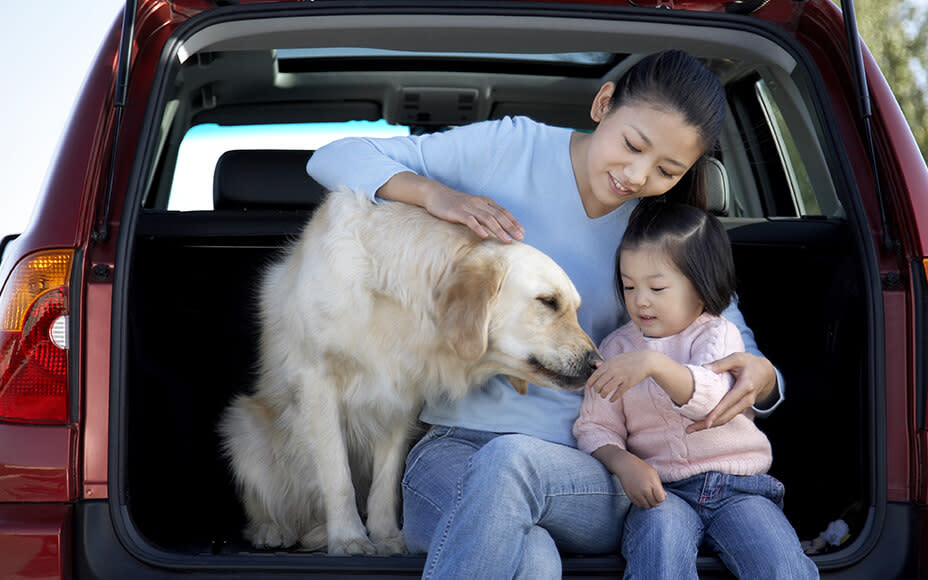
Labrador:
Just like the Golden Retriever, the Labrador has earned its place in the popularity rankings. Always with a smile on its lips, plenty of energy, and an all-around friendly nature – that’s what makes the Labrador a family dog breed. Labrador puppies, with their playful and friendly nature, are particularly popular.
Extremely people-oriented and eager to learn, the Labrador wants to be well-behaved. Its original use as a hunting dog is evident, especially when it comes to water or the forest. As a working dog, it appreciates diverse activities such as retrieving, food and intelligence games, or other dog sports.
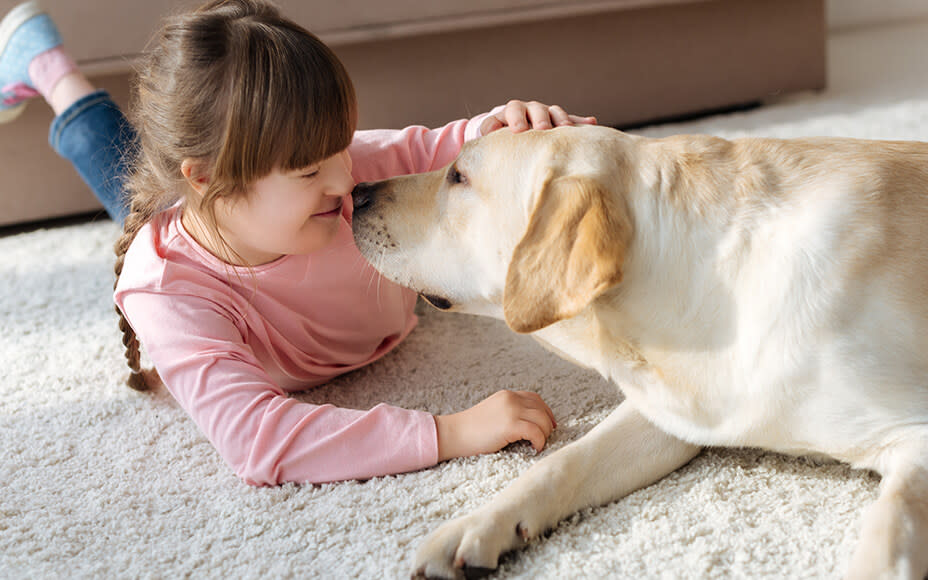
Newfoundland:
The black giant in its long coat looks like a true teddy bear at first glance. Unlike some other large dog breeds, the appearance is not deceptive here – the “Newfie” is a true treasure with its gentle nature. Whether cuddled up with the kids on the couch, motivated in the forest, or obedient at the dog training field: This large, family-friendly dog breed is a true all-rounder.
As undemanding as the Newfoundland is, its size should not be underestimated in terms of housing. Here’s the rule: Big dog, big space – ideally, a house with a yard or garden is suitable.

Tip: When it comes to the nutrition of large and active dog breeds, consider a high meat content, providing essential protein and supplying enough energy for an active day. Our Wet Food Extra Meat is for real meat connoisseurs and meets your dog’s needs in a healthy way. Alternatively, you can feed your four-legged friend fresh and balanced with our 3-2-1 BARF concept!
Australian Shepherd:
With its beautiful appearance, the Australian Shepherd is no longer just a herding dog in the field but has become a part of many families thanks to its balanced and friendly nature. Well-tolerant with children and fellow four-legged companions, the “Aussie” reveals itself as a versatile family dog with its marbled coat.
But beware: If you’re looking for a calm dog, the Australian Shepherd is not the right choice. Following the motto of a herding dog, this furry friend needs physical and mental stimulation, which is hardly achievable with a short walk around the block. Instead, consistent training and, above all, a task are advisable so that the “Aussie” can pursue its passion.
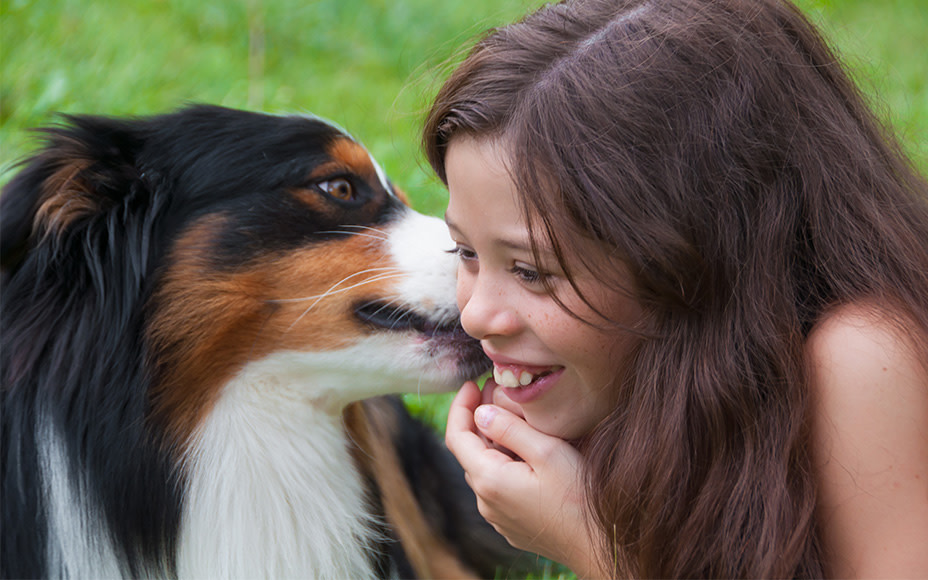
Children and Dogs – What to Consider
Seeing their child snuggled up next to the dog on the sofa, many parents hardly consider what could potentially go wrong in the lives of families with children and dogs. Many owners reflect little to not at all before acquiring a dog on what conditions must be met for life between child and dog to function.
Many studies demonstrate that dogs are very beneficial for children. They promote social skills and overall childhood development. This makes sense, as many children come into contact with dogs at a young age and ideally learn how to interact correctly with a four-legged creature. Additionally, there’s the aspect of assuming responsibility, getting outdoor exercise, and having a furry friend around.
Peaceful coexistence between child and dog: Here’s how
Unlike us humans, however, dogs cannot say, “Now, I need my half-hour break and some time for myself!” Instead, dogs communicate through their body language, which children do not necessarily understand from the start. This is where a well-prepared introduction comes into play. Parents are thus responsible for teaching their children the communication behavior of dogs. If these signals are ignored and dogs resort to behaviors such as growling and snapping as a last resort, it means communication wasn’t properly understood, and boundaries were crossed.
Family dogs may have stronger nerves, but they also need a break from the noise of children. For this, a retreat area like a crate or den, accessible only to the dog, is recommended. Children must respect this space as the dog’s personal area so that quiet periods can be utilized away from the hustle and bustle.
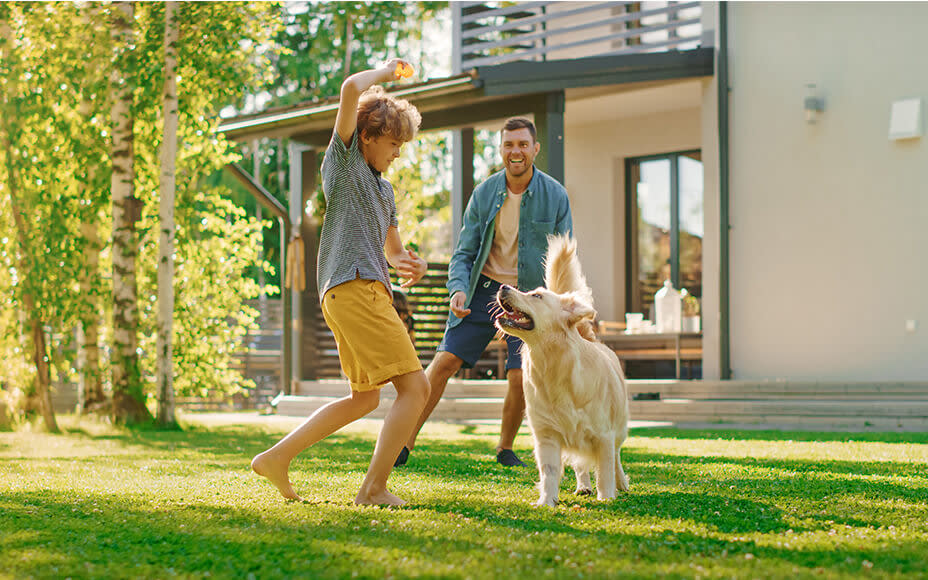
Dogs function differently than humans, that much is clear. Gestures that are normal for children in their interactions with other children or adults, such as kisses or hugs, can be strange or even threatening to dogs. Such important behavioral rules are essential for the harmonious life of a family with a dog and should be observed in any case.
While our four-legged friends may not always interpret a kiss as a sign of love, there is one thing they certainly understand as affection: a tasty snack that speaks louder than 1000 words. After all, love goes through the dog’s stomach, so what are you waiting for?
Important Questions About Family Dog Breeds
Which dog breeds are calm AND family-friendly?
In general, family dogs bring the necessary motivation and energy needed in a family. However, perhaps your family is smaller, the children are a bit older, and your activities are more relaxed. For such families, calm and family-friendly dogs are especially suitable:
- Newfoundland
- Golden Retriever
- Maltese
- Papillon
- Bichon Frise
- Havanese
Are Terriers also family dogs?
Of course, there are Terriers that are suitable as family dog breeds. It’s important to note that Terriers naturally bring a lot of energy and require plenty of time for training and exercise in daily life.
Without sufficient stimulation, they tend to develop various undesirable behaviors. Because there can be plenty of commotion in a family even without the specific temperament of a Terrier, owning one is advisable if you have the necessary time and consistency. The following Terriers are suitable as family dogs:


